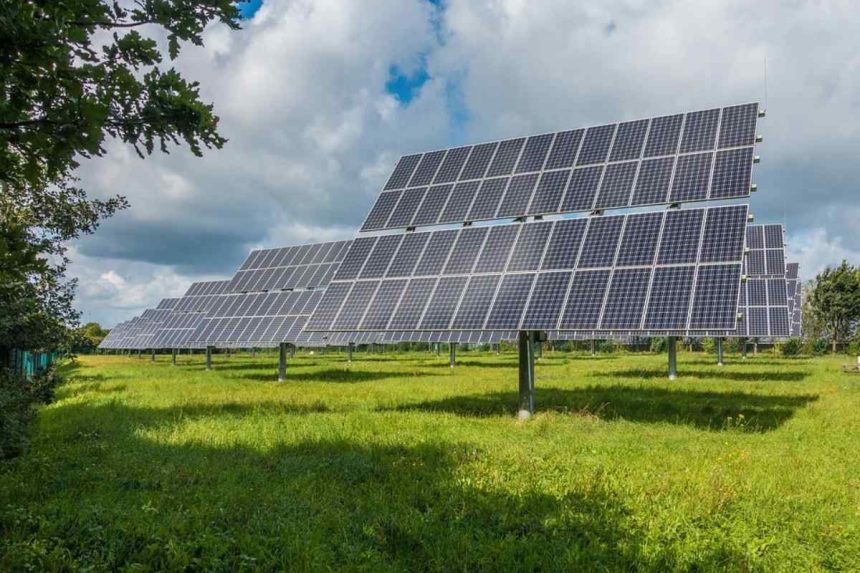Solar panels are one of the most popular and fastest-growing types of renewable energy on the market, and it’s easy to see why. They help save energy that would otherwise be drawn from the grid, lower your energy bills, and provide a good financial return. While the upfront fees may seem hefty, the payback period is very short, so don’t dismiss them just yet.
What Is The Method Of Action?
It’s critical to understand how solar energy works since it’s via this process that we can see how it saves energy. Solar energy, to put it simply, is the energy captured from the sun. It is turned to solar energy, which is used to power or heat your home.
Solar power is produced by a surface that gathers energy, typically a solar panel system, as well as a method of turning the captured energy into heat or electricity.
Solar energy can be transformed to solar power in two different ways. This is what they are:
Photovoltaic Conversion
Photovoltaic Conversion is a term used to describe the conversion of sunlight into electricity (PV). This is also known as direct conversion and is the most frequent method of solar energy generation. It entails the generation of electricity through the use of solar panels, or solar PV.
Indirect conversion
Conversion of sunlight to heat. This process, also known as indirect conversion, is utilised to heat your home. Solar energy in this way is becoming increasingly common. It usually entails utilising a thermal collector to generate heat so that your water or residence can be heated using solar energy.
Solar panels save energy primarily by reducing a household’s reliance on the grid. Because you’re using renewable energy, you’ll use less energy than if you were using grid-generated energy. Plus, if you don’t want to sell your excess energy back to the grid, you can store it in a solar battery, providing you complete autonomy even at night.
Purchase and installation of solar cells can be expensive, and not everyone has the necessary funds up front. Solar energy can, however, be put in people’s houses for free. Customers are effectively renting their roofs to the government, which allows this to be done.
The procedure goes like this:
- The solar panels are installed when you rent your roof to the vendors.
- You don’t have to pay anything, but the installer is responsible for all Feed-in Tariff (FIT) payments for the next 20 years.
- While you will not be able to keep the FIT payments, you will still be able to save a significant amount of money on your annual energy bills, and you will not have to worry about any maintenance because the installer will handle everything.
- If you can’t afford to pay for the initial installation of a solar panel system, you don’t have to abandon the concept of using this energy-efficient method of power generation. It’s a win-win situation for all parties involved, as well as one that’s effective.
Tariff For Feed-In
You will benefit from FIT payments in three ways if you are eligible:
Tariffs for Power Generation
Each kWh of electricity you generate will be paid at a defined rate by your energy provider. The tariff levels will be guaranteed for the duration of the tariff after your system has been registered. They normally last for up to 20 years and are index-linked.
Export Tariffs
Your energy provider will pay you a higher rate for each unit you export back to the grid. This means that any electricity you produce but do not need can be sold. Smart metres are being placed to track export rates; however, it is anticipated that roughly half of the energy generated is being sold back until this is done. Another illustration of how much energy may be conserved.
Savings On Your Electricity Bill
Because you are generating electricity to power your home, you will be able to save a significant amount of money on your monthly bills. The amount you save depends on how much electricity you consume on a daily basis.
Effectiveness For The Environment
You can lower the amount of electricity you use from the grid by installing solar panels. Solar batteries can also be used to power your home at night. This not only saves electricity, but it also minimises the quantity of pollution generated on a daily basis. There are none.
- Solar energy is solely based on gathering sunlight and transforming it into electricity or heat for your home. This means you’re not emitting any hazardous emissions that contribute to global warming. In a year, it can potentially lower your carbon impact by 80%.
- Solar power is a renewable source of power. That is to say, the energy that the sun provides us will not run out until the sun dies. At the time, the most common energy source was fossil fuels, which are not renewable. We’ve already depleted them, and their use harms the environment. It can have a tremendous influence if just one less home uses them.
- When gas boilers and other sources of traditional heating fail, we usually replace them or perform invasive repairs. These could add to the toxic pollutants that we produce on a daily basis, which is bad for the environment.
- Solar panels’ manufacturing process isn’t perfect, as some toxic waste is produced, but the fact that they don’t need to be maintained means they’re also environmentally friendly.
Installing solar panels by solar companies in New Mexico your home may seem like the perfect solution to all of life’s problems, but it doesn’t work that way. Even if you install enough electric-generating capacity (EPC) so as not to use any electricity from utility companies in future months and years – even when cloudy or nighttime hours roll around – there will still be an EPG sent out every month because property owners cannot disconnect themselves from their local power grid.

